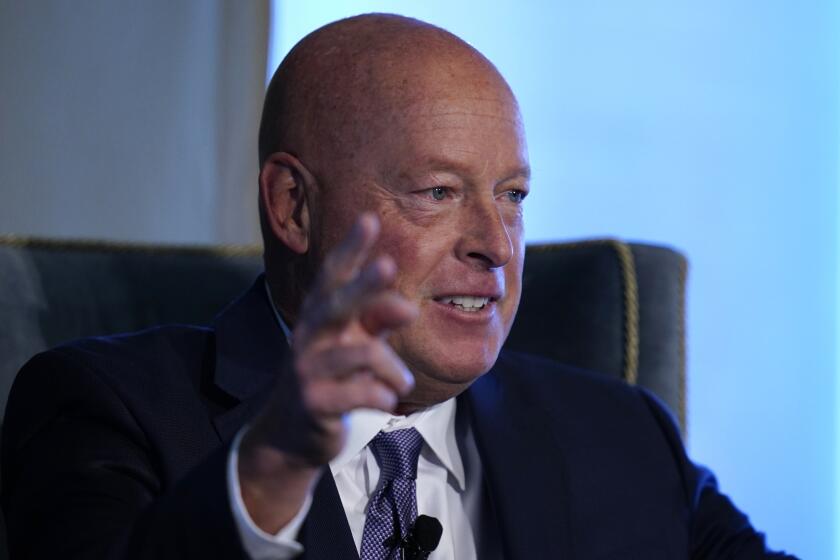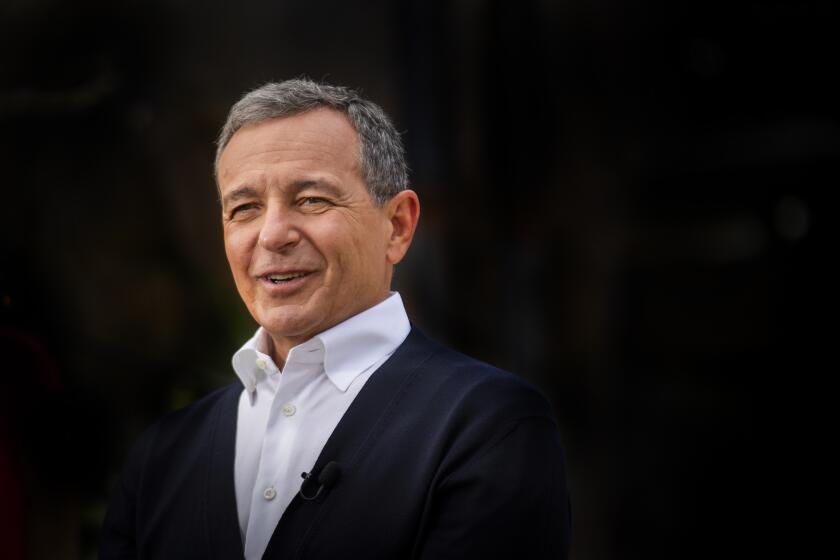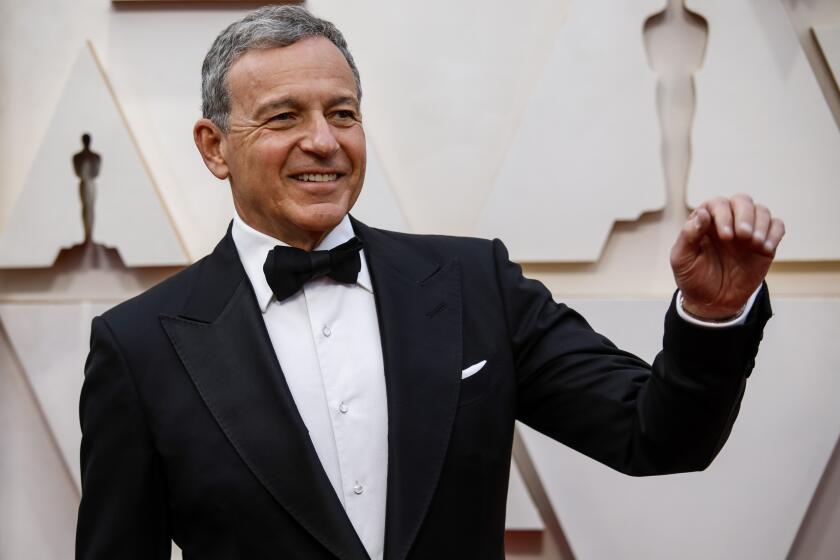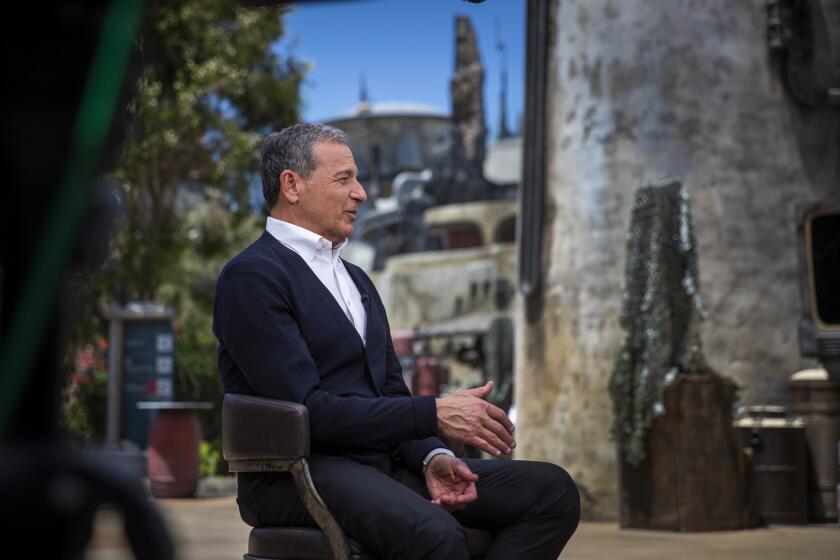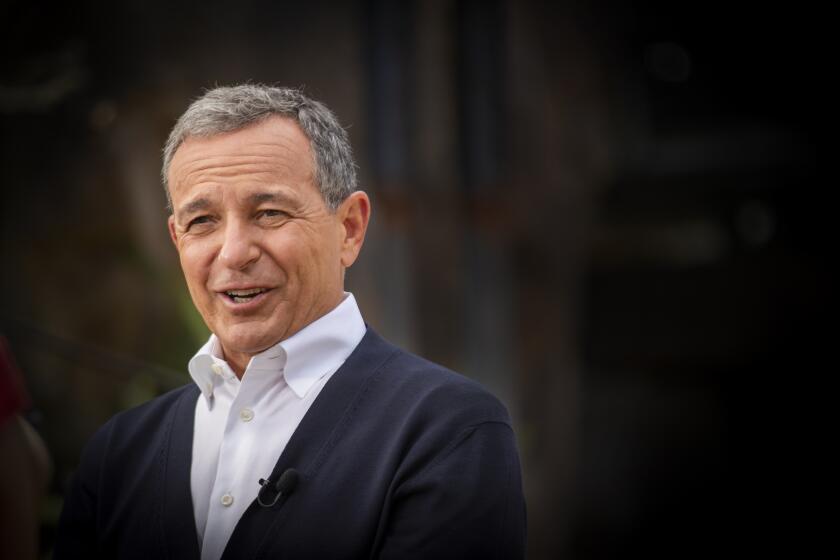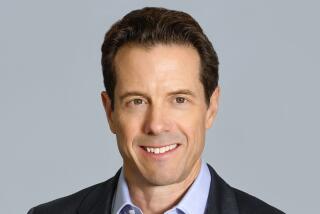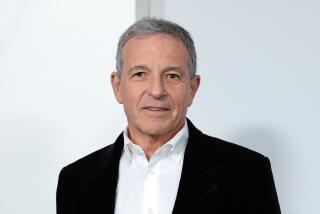Kareem Daniel and the rise and fall of the Disney executive who helped define the Bob Chapek era
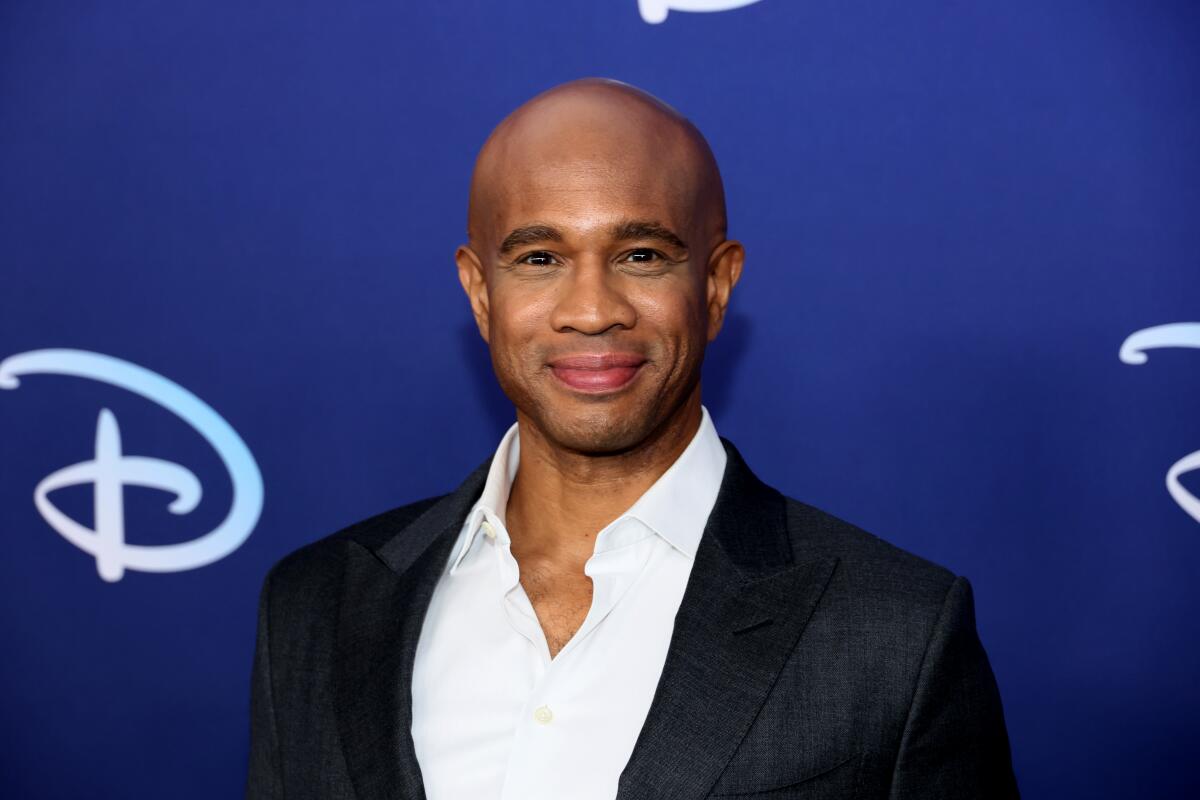
- Share via
For more than a decade, Kareem Daniel faithfully followed the Walt Disney Co. script for success.
The 48-year-old executive had a Stanford MBA. He started as an intern and held key leadership roles with divisions including the Imagineers, the vaunted designers of theme park rides. He was a movie buff and an unabashed fan of Disney properties — his favorite toy as a boy was the Millennium Falcon, the hulking spaceship from “Star Wars.”
His ascent accelerated in 2020 when his mentor, Bob Chapek, became Disney’s chief executive. Daniel was tapped to run consumer products, and five months later, he hurdled over more experienced executives to lead a massive new and controversial business unit.
For Disney’s Black employees, Daniel’s rise was a point of pride. His promotion came after a summer of protests over the murder of George Floyd in Minneapolis, and media companies were under the microscope for their lack of diversity in the C-suite.
“There was an African American male at the top — that was huge,” said a former Disney executive who wasn’t authorized to speak publicly. “It seemed that he was suddenly in the succession line.”
He was the czar in charge of $30 billion a year in program spending, deciding release strategies for Disney’s movies and TV shows, steering them to streaming services, Disney+, ESPN+ or Hulu, theaters or one of the company’s TV channels.
That changed last month, when Disney’s board of directors abruptly fired Chapek and brought back the Burbank giant’s respected former Chief Executive Bob Iger, less than a year after he had said goodbye. Iger’s first act was to announce a review of Daniel’s division — Disney Media & Entertainment Distribution, known as DMED — and show Daniel the door.
Disney insiders cheered the dismantling of the maligned DMED (pronounced Dee-med). The move promised to unwind what many said was one of Chapek’s biggest mistakes in his nearly three years as Disney’s CEO. Daniel and Chapek had designed a structure that was meant to streamline decision-making to boost Disney’s portfolio of direct-to-consumer apps — which, at the time, were in vogue on Wall Street. Financial executives, not those who developed the programming, were in the driver’s seat.
But the arrangement fostered resentment among creative executives in the film and TV studios who felt their authority was slipping away.
Disney’s board gave Bob Chapek a three-year contract extension in June. Five months later, the board replaced him with predecessor Bob Iger. What happened?
Daniel’s tenure atop DMED and subsequent ouster was a classic case of corporate politics unfolding at the world’s most powerful entertainment company. It’s common practice for a new regime to briskly push aside a fired CEO’s closest deputies and allies, and Daniel’s proximity to Chapek put him well within the blast radius. (Daniel also acted as Chapek’s chief of staff in 2020 before being tapped to lead DMED.)
Getting rid of Daniel was a quick and symbolic way for Iger to signal a clean break with the prior regime and restore balance to a company that had been rattled by infighting, a falling stock price, the lingering effects of the COVID-19 pandemic, political battles in Florida and greater than expected financial losses in streaming.
“Kareem’s crime was that he was close to Chapek and that he helped design and led an organizational construct that was hated by the creatives,” one former Disney executive said.
Iger created a task force to restructure Disney again, returning clout to the creative heads, in a swift rebuke of Chapek’s leadership.
Here are key players in the Walt Disney Co. leadership drama that saw the board bring Bob Iger back as CEO, replacing his former lieutenant Bob Chapek.
“The announcement I made last week about DMED, which is a work in progress, is designed to do one thing: to restore to the creative businesses the control, responsibility, and accountability over what we create,” Iger said in a Monday morning town hall with employees on Disney’s Burbank lot. “That’s how this company has been structured for most of its history, and that’s how it will be structured going forward.”
The shake-up was reminiscent of an Iger move years ago.
Under his predecessor, Michael Eisner, key decision-making was centralized in a strategic planning business unit run by former executive Peter Murphy, whose domineering style infuriated creative executives. After Iger was named CEO in 2005, Murphy was stripped of power and the strategic planning group was dramatically downsized with the similar goal of returning responsibility to creative leaders.
“When you get to certain levels in our industry, structural issues and corporate politics become involved,” said one Disney executive who was not authorized to comment. “The stakes are very high.”
Still, some were taken aback at the swiftness of Daniel’s dismissal, considering his stature at Disney and the company’s historic shortage of people of color in its upper ranks.
“Our town’s not the most tenderhearted, but discarding high-end senior talent? I don’t think it promotes stability,” said one prominent agent who declined to be identified to protect business relationships.
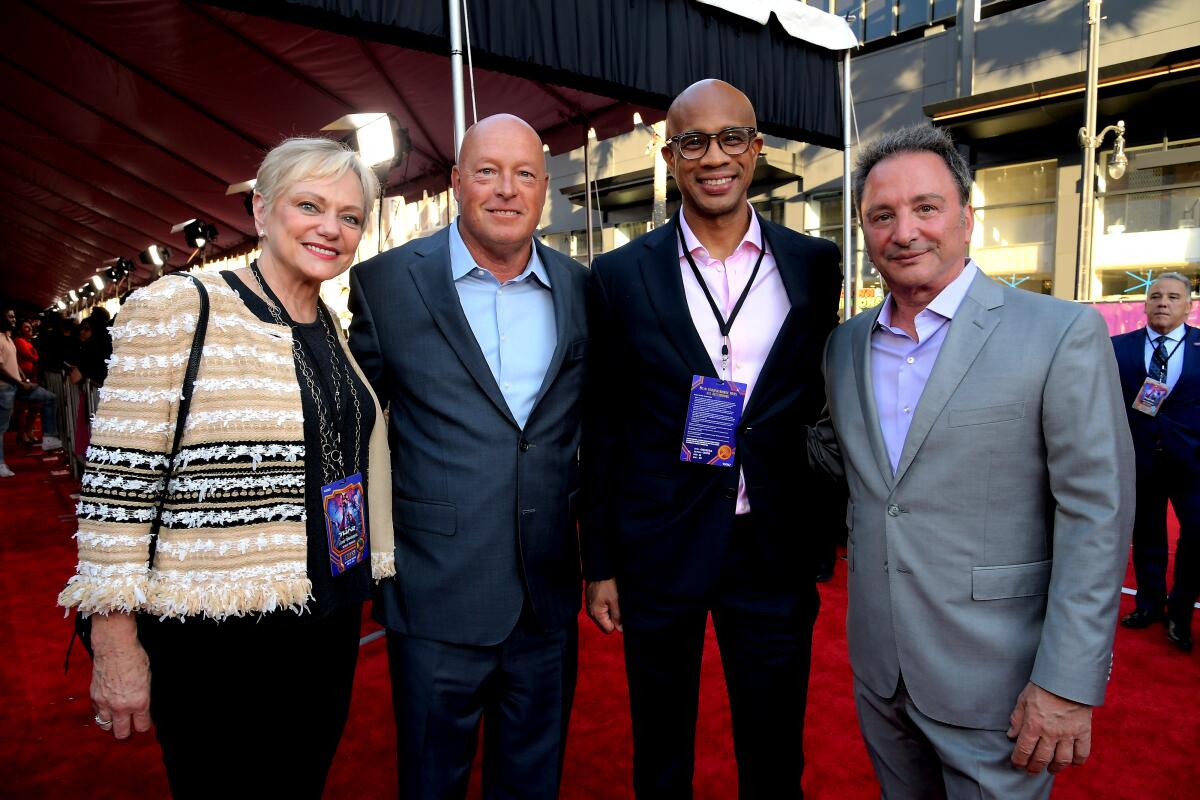
Daniel did not respond to requests for comment. Disney declined to comment.
In a seismic shock to Hollywood, former longtime Disney chief Robert Iger will return to lead the entertainment giant, the Disney board announced Sunday night.
Daniel grew up on the South Side of Chicago, spending hours reading Marvel and other comics at Chicago Ridge Mall. He also developed a lasting fondness for film.
“My favorite thing growing up was going to the movies,” Daniel said in an interview earlier this year with Disney’s KABC-TV Channel 7, in which he described going to see “The Empire Strikes Back.” “I went with my mom. We were leaving the theater and she saw that joy on my face, and she asked if I wanted to see it again.”
The son of a professor and a nurse, Daniel followed his sister at the academically rigorous Morgan Park Academy in Chicago, going on to earn his bachelor’s degree in electrical engineering and an MBA from Stanford University.
Disney has a rocky track record when it comes to succession planning. Can Iger defy the company’s own history?
In media interviews, Daniel described his desire to land a job at Disney.
It was Chapek who opened the door. While in graduate school, Daniel pushed for an interview and ultimately met with Chapek, who hired him as an intern. After he earned his MBA, Daniel entered the investment banking world, working about three years at Goldman Sachs. He joined Disney in 2007 in strategic planning, and he ended up working on the 2009 acquisition of Marvel Entertainment.
He had jobs overseeing distribution strategy for Disney’s movies, then business strategy for consumer products and video games before being placed in a leadership role at Imagineering, the group that designs Disney’s theme park attractions.
Former Imagineer Jim Shull recalls guiding Daniel on a tour of the company’s Shanghai park, where he asked questions about the process of designing park attractions, typical for an executive coming into an unfamiliar part of the business.
“He was extremely personable and asked a lot of the right questions,” Shull said. “He was stepping into a world he’d never been part of.”
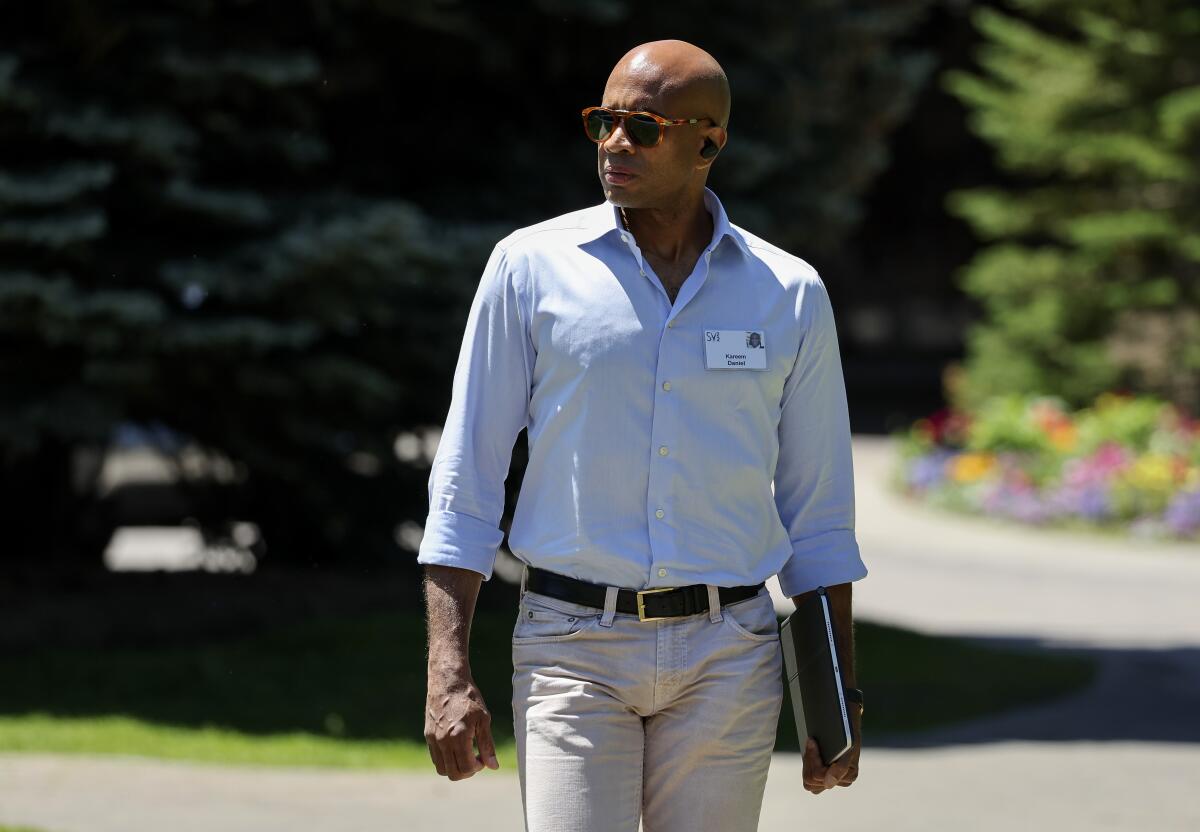
At Imagineering, Daniel supported some important initiatives, like the revamping of Splash Mountain, which was inspired by the racist 1946 film “Song of the South.”
But some Imagineers bristled under his bottom line-focused management style, said two people familiar with his tenure. In May 2020, three months after Chapek stepped into the top job, Daniel was named president of consumer products, gaming and publishing.
Just five months later, Daniel was running DMED.
Chapek’s idea to restructure Disney may have made sense on paper and at the height of the pandemic, when sign-ups for Disney+ were surging. Chapek wanted to accelerate Disney’s pivot to a primarily direct-to-consumer model.
Walt Disney Co. ousted Bob Chapek and brought back Bob Iger to run the Burbank-based company, sending shockwaves through the industry.
To help with that push, Chapek wanted Daniel’s group to figure out the best way to bring Disney’s content to the public — either on streaming, in theaters or on channels such as ABC, Freeform or FX. Meanwhile, the heads of the programming and studio divisions would focus on what they did best: making shows and movies.
But in practice, the structure confused outside creatives who couldn’t tell who was really in charge. Division heads felt their power being stripped.
Internally, there was confusion and awkward boundaries. For example, the movie studio had long enjoyed oversight of theatrical box office revenues, but suddenly that function was part of DMED’s purview.
And Daniel’s group seemed poised to gain even more power.
In recent months, consultants from the advisory firm McKinsey & Co. had been working with Disney to further centralize decision-making functions and cut costs, an effort led by Disney Chief Financial Officer Christine McCarthy, according to people familiar with the effort. The Wall Street Journal first reported the involvement of the consultants.
Daniel also began lobbying to bring marketing spending for the company’s content into his DMED group, according to the knowledgeable people. Such a switch would mark another erosion of power for the film and TV studio executives. At an October corporate retreat in Orlando, Chapek told Disney leaders that the company had to seriously look at its marketing operations, which raised eyebrows and fueled more discontent.
McKinsey is still working with Disney, people familiar with the matter said.
Disney insiders painted a mixed portrait of Daniel. Several executives described him as smart, hardworking and driven. In October, he was elected to McDonald’s Corp.’s board of directors.
But others criticized his unsentimental approach to decisions, saying it could come across as overly clinical. Detractors complained that Daniel lacked experience to manage such an enormous and unwieldy portfolio. Numerous people described him as unbending and “arrogant.” Said one Disney insider: “He was very harsh on his subordinates.”
In addition to distribution and advertising sales, Daniel’s group was also responsible for the operations of the company’s streaming services.
Insiders said that relations between DMED and the creative executives were cordial in person and in public settings, but some creatives seethed in private. Daniel, like Chapek, adhered to a management style known as ARCI (accountable, responsible, consulted, informed), seen as a way of clearly assigning accountability. He brought an engineer’s mind-set to the job, taking the emotion out of decision-making.
Iger spoke about the need to make Disney’s streaming business profitable and signaled that a hiring freeze would remain in place.
That approach didn’t sit well with producers and creatives who worked for years on projects that they saw as labors of love. Animators, for example, were disappointed when earlier this year, Disney sent Pixar’s “Turning Red,” a highly personal movie about a Chinese Canadian adolescent girl, straight to Disney+, skipping a theatrical release.
At the time, Daniel defended the decision.
“Given the delayed box office recovery, particularly for family films, flexibility remains at the core of our distribution decisions,” he said in a statement.
Daniel’s ties to Chapek contributed to his downfall.
Chapek and Daniel were good friends outside the office. They shared inside jokes and humorous photos of each other’s travels to the theme parks, according to a person who knows both executives.
Daniel’s competitive zeal became the talk of a 2019 corporate retreat at Walt Disney World in Orlando, according to two former executives who were in attendance.
The retreat included the awarding of trophies for sporting events. There, Daniel played on a softball team led by Iger, who tried to rally his team from falling behind. Up to the plate, Daniel hit a ground ball and charged down the first base line, colliding with Chapek, who was on the opposite team. Chapek was bleeding from the head and needed medical attention.
Iger and Daniel’s team went on to win, the former executives said.
On Sunday, Nov. 20, Daniel arrived at Dodger Stadium for Elton John’s final “Farewell Yellow Brick Road” concert in North America, which was livestreamed on Disney+. The executive had just stepped out of his car at the valet line and into Disney’s hospitality tent where dignitaries mingled, when phones of Disney executives in attendance lit up with Iger’s email announcement that he was returning as chief executive.
Disney executives were stunned. Daniel quickly turned around and left the event, according to three people knowledgeable of the situation.
The following morning, Daniel was out of his job.
“This was about how the company should be structured, and that transcends who should be in any particular job,” said one Disney executive.
But the former Disney executive who spoke of Black employees’ pride for Daniel expressed sadness over his unceremonious departure.
“Kareem was the first African American executive to be put in a position of power at that level,” the former employee said. “And for it to fall apart in just two years is absolutely tragic.”
Times staff writer Stephen Battaglio contributed to this article.
More to Read
Inside the business of entertainment
The Wide Shot brings you news, analysis and insights on everything from streaming wars to production — and what it all means for the future.
You may occasionally receive promotional content from the Los Angeles Times.
